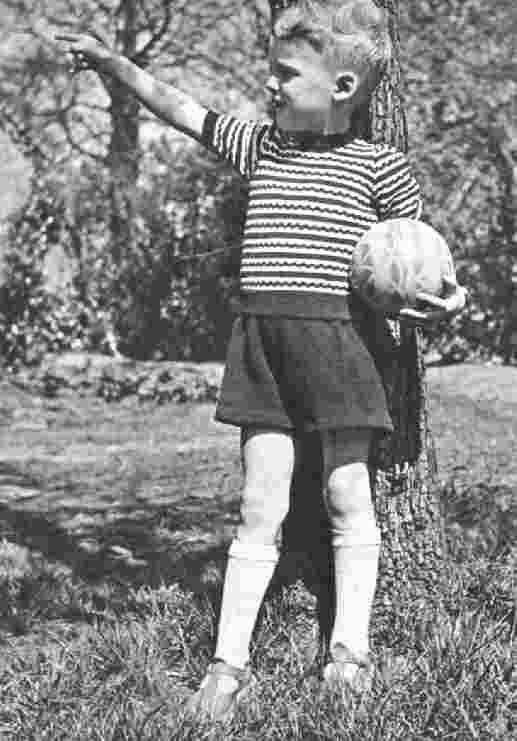
Figure 1.--This 1951 image shows a younger Dutch boy wearing English-style school sandals. During the 1950s sandals, especially the English style, became a style worn by increasingly younger boys. He wears a knit outfit, a popular 1950s style.

It was in the 1920s that sandals appeared, although they appear to have been most commonly worn in the late 1940s and early 50s. At first English-style school sandals were the most common, but other styles appeared after World War II. German fashions had always been popular in the Netherlands. This changed in the immediate post-World War II era. English styles became very fahionable. Gradually the English-style sandal became a style for younger boys. As memories of the war receded, German fashions once more increased in popularity. Older boys began wearing the open-toed sandals that became so popular in Germany.
HBC has little information on Dutch sandals. I have not noted Dutch boys wearing them before World War I (1914-18). Heavy boo-like shoes were more common. Younger boys di wear dressy strap shoes, but I did not note sandals. It was in the 1920s that sandals seem to have appeared. English "T"-strap shoe sandals appear to have been the most common style. They appear to have been most commonly worn in the late 1940s and early 50s. Sandal styles changed in the 1960s. Only younger boys wore the English-style sandals, but a wider age group began wearing German-style open-toe sandals.
At first English-style school sandals were the most common, but other styles appeared after World War II. German fashions had always been popular in the Netherlands. This changed in the immediate post-World War II era. English styles became very fahionable. Gradually the English-style sandal became a style for younger boys. As memories of the war receded, German fashions once more increased in popularity. Older boys began wearing the open-toed sandals that became so popular in Germany.
HBC has noted two basic style of sandals, closed and open toe sandals. The closed toe sandals were commonly worn through the 1950s by invreasingly younger boys. Open toe sandals appeared in the 1970s and were worn by older as well as younger boys.
HBC has no infomation on Dutch sandal colors at this time. HBC is not sure what color Dutch sandals were. Notably the 1965 sandals pictured here were not offered in different colors. Presumably that were all a shade of dark brown.
HBC is not sure what age boys wore English-school sandals in the 1920s and 30s. In other countries boys including teenagers wore them, but they were most common for pre-teen boys. By the 1950s they were mostly worn but tounger boys. As open-toe sanals appeared in the 1970s , boys including teenagers wore them.
Both boys and girls wore closed toe sandals. Mostly boys wore the open-toe sandals.
The Dutch word for sandals is "sandalen", the singular is "sandaal". This is the same word as in German. I'm not sure what the text of the newspaper advertisement such as "Voor vader en zoon" means. It may mean for father an son. The ads for the differt models read:
Model 790: "Met leren zool of met rubberzool. Jongensmaten vanaf f12.95. Alle herenmaten f18.95. That means with leather or rubber sole. I believe the prices are for boy and adult sizes.
Model 990: Met de sportieve Robinson-ballonzool. Jogensmaten anaf f12.95. Alle herenmaten f18.95. This sandal has a "sporty" Robinson "ballon" sole. I'm not sure who Robinson is or what a ballon sole is.
Model 4590: Met de sportieve Robinson-ballonzool. Jogensmaten vanaf f12.95. Alle herenmaten f18.95.
Model 4890: Herensandaal op speciale leest. Met de sportieve Robinson-ballonzool. Alle herenmaten f18.95. I'm not sure what the Dutch texy, but apparently this style was only condidered appropriate for adults. It was not made in boys' sizes. HBC is not sure why.
Navigate the Boys' Historical Clothing Web Site:
[Introduction]
[Activities]
[Bibliographies]
[Biographies]
[Chronology]
[Clothing styles]
[Contributions]
[Countries]
[Boys' Clothing Home]
Navigate the Boys' Historical Clothing Dutch pages:
[Return to the Main Dutch footwear page]
[Maiken Island]
[Dutch choirs]
[Dutch royalty]
[Dutch scouts]
[Dutch school uniform]
[Dutch boys bangs]
Navigate the Boys' Historical Clothing national pages:
[Return to the Main countries page]
[Australia]
[Belgium]
[England]
[France]
[Germany]
[Ireland]
[Italy]
[Japan]
[Korea]
[Mexico]
[Netherlands]
[Scotland]
[United States]
